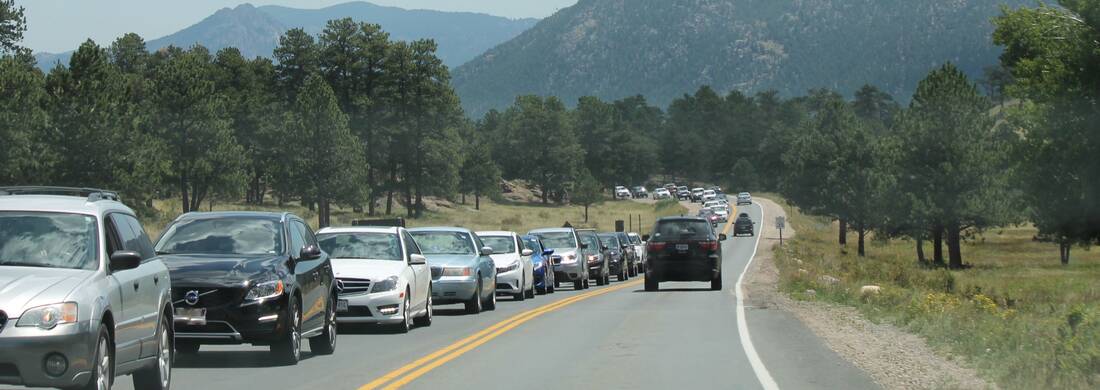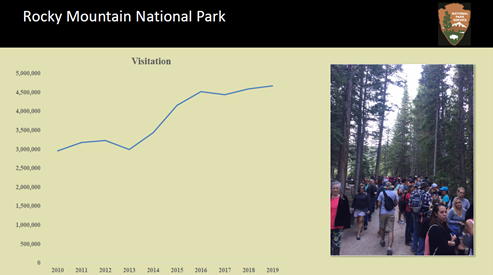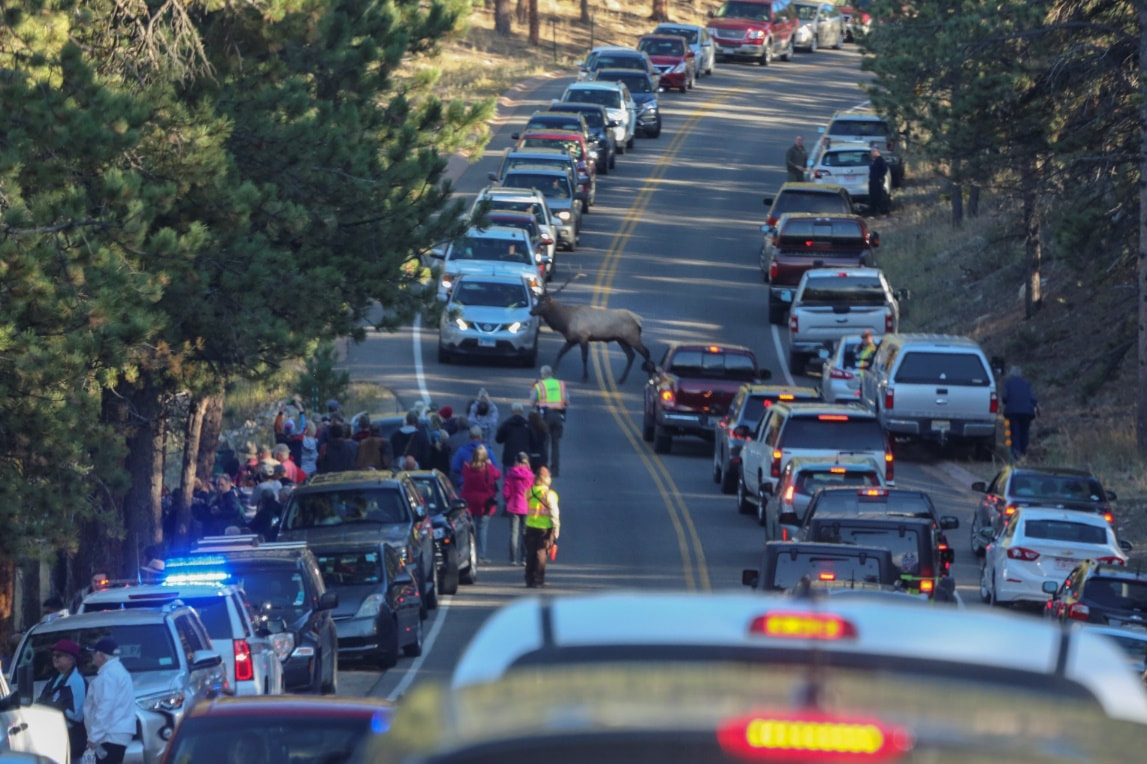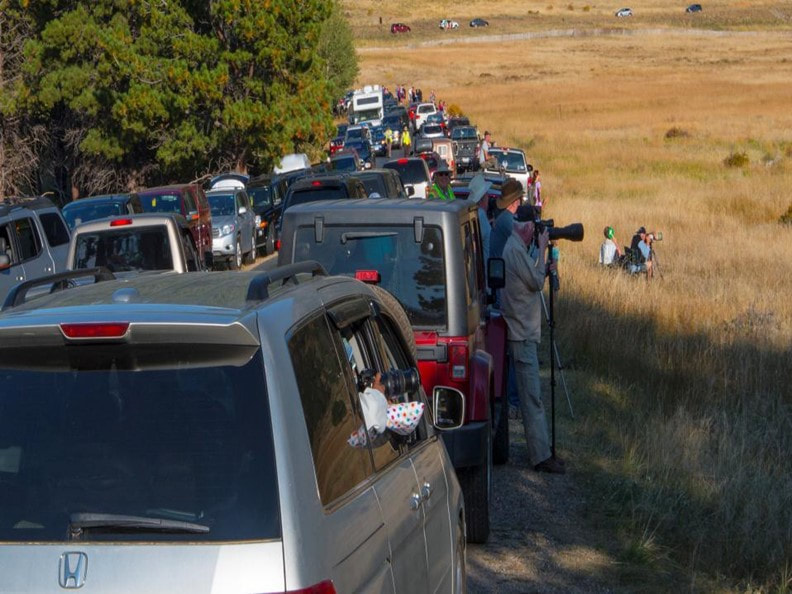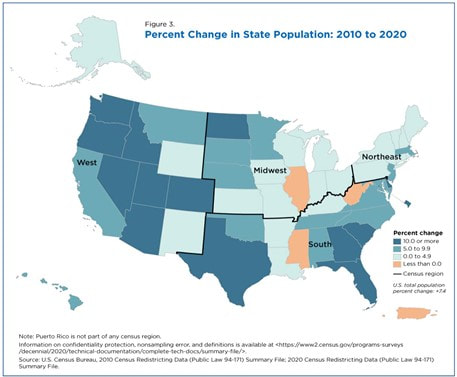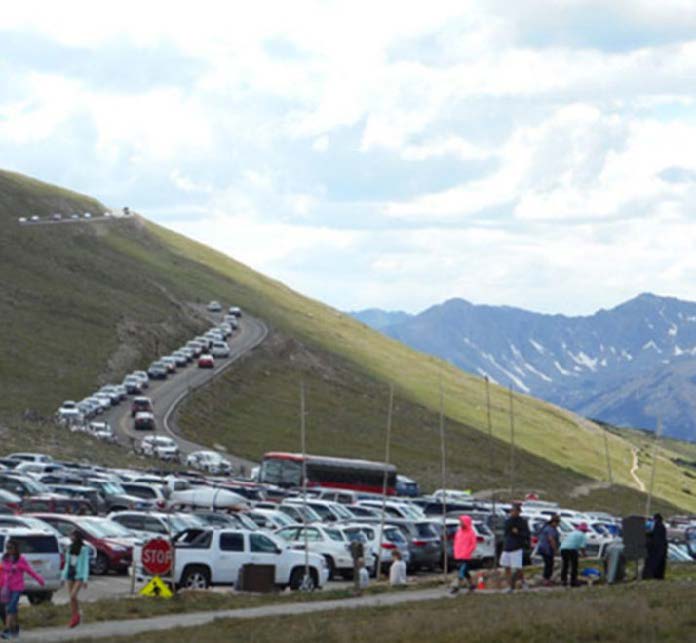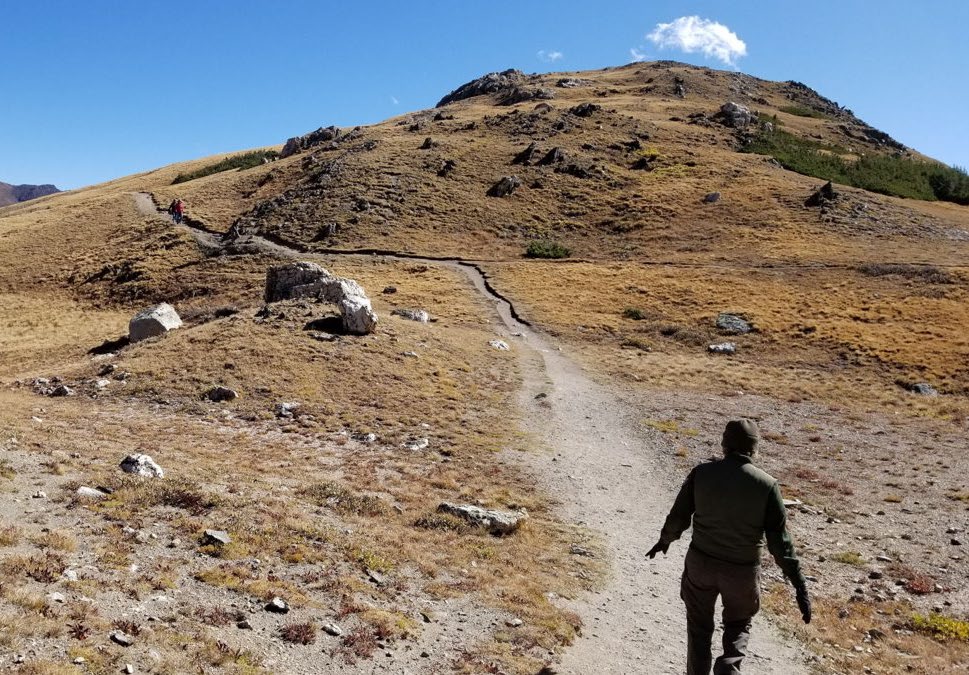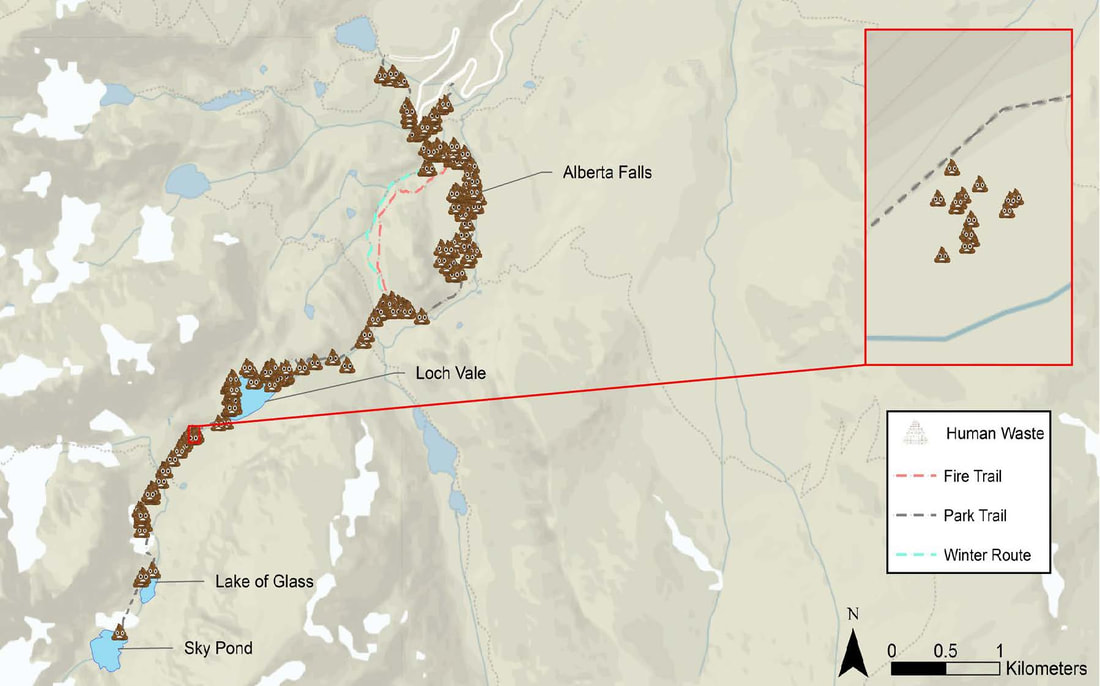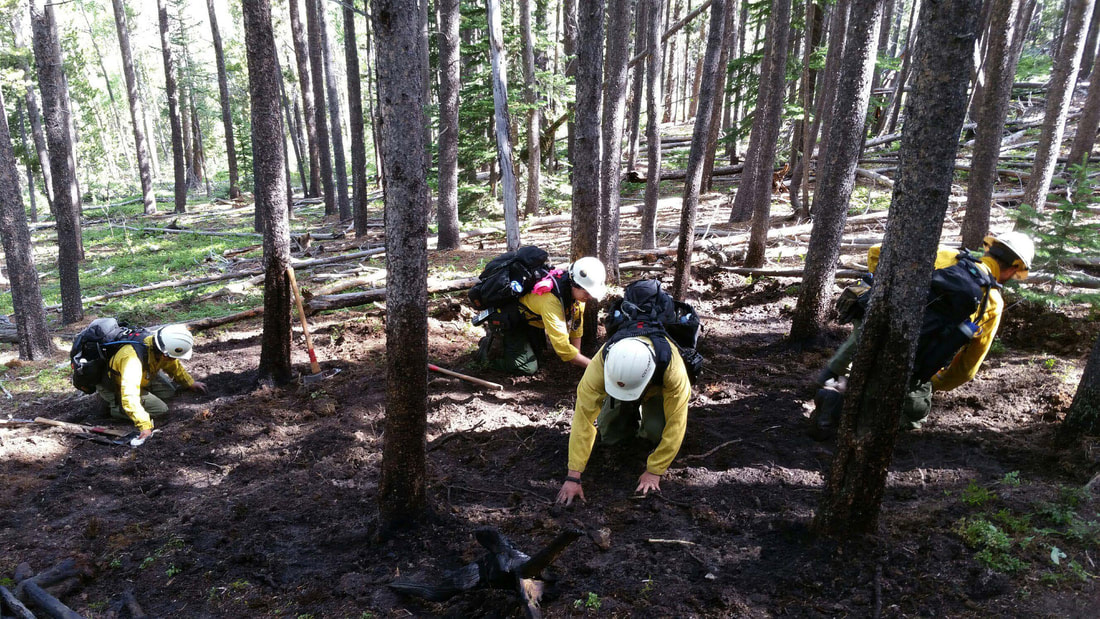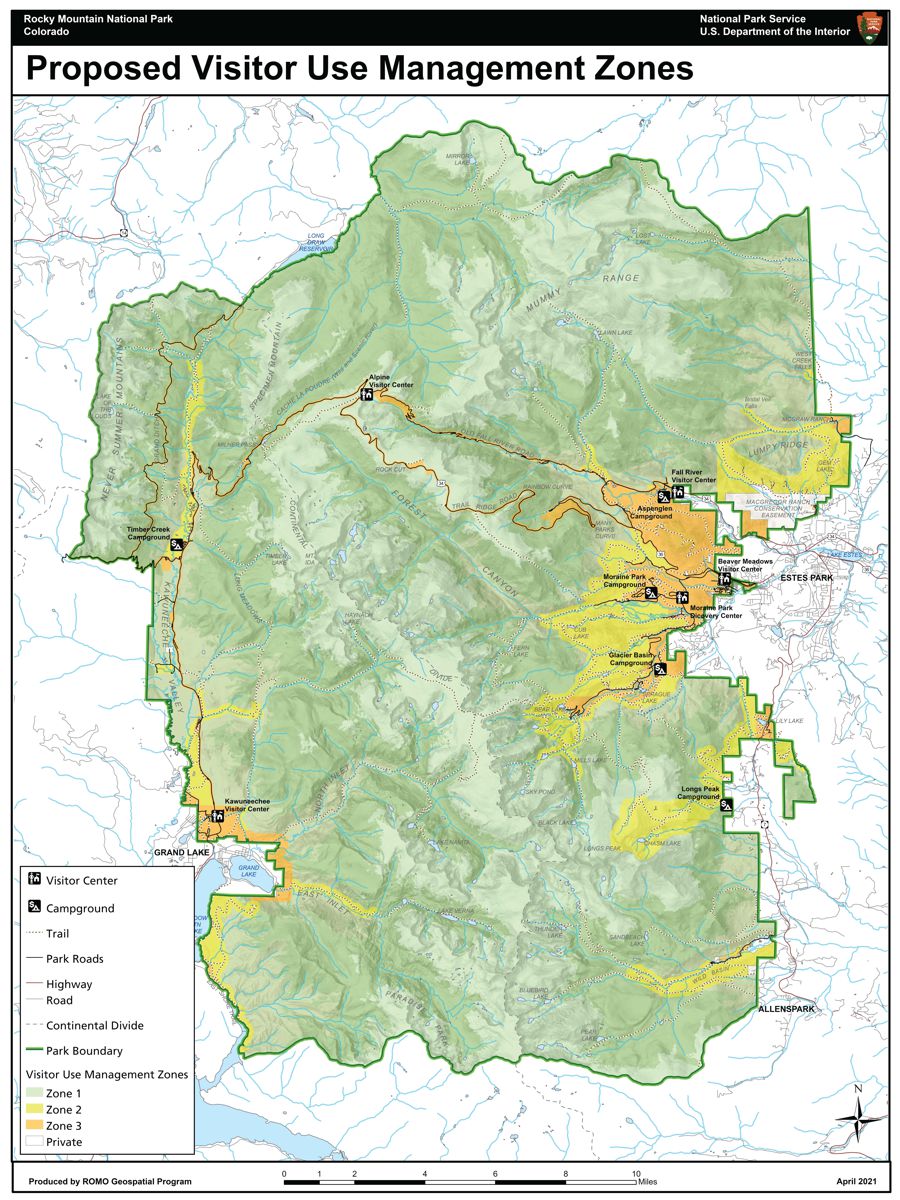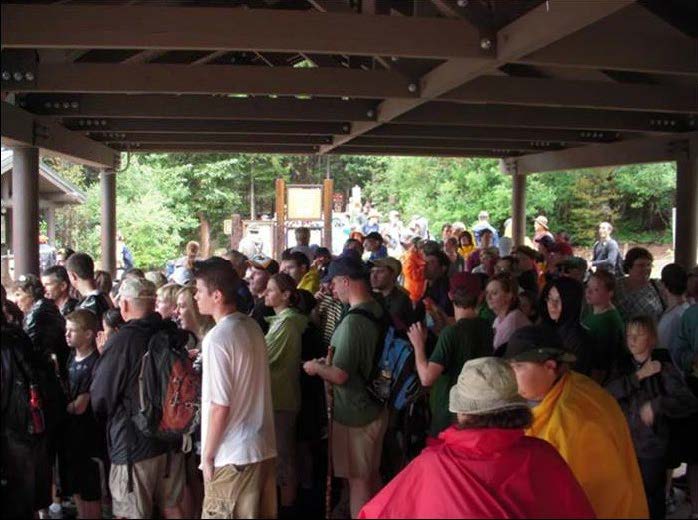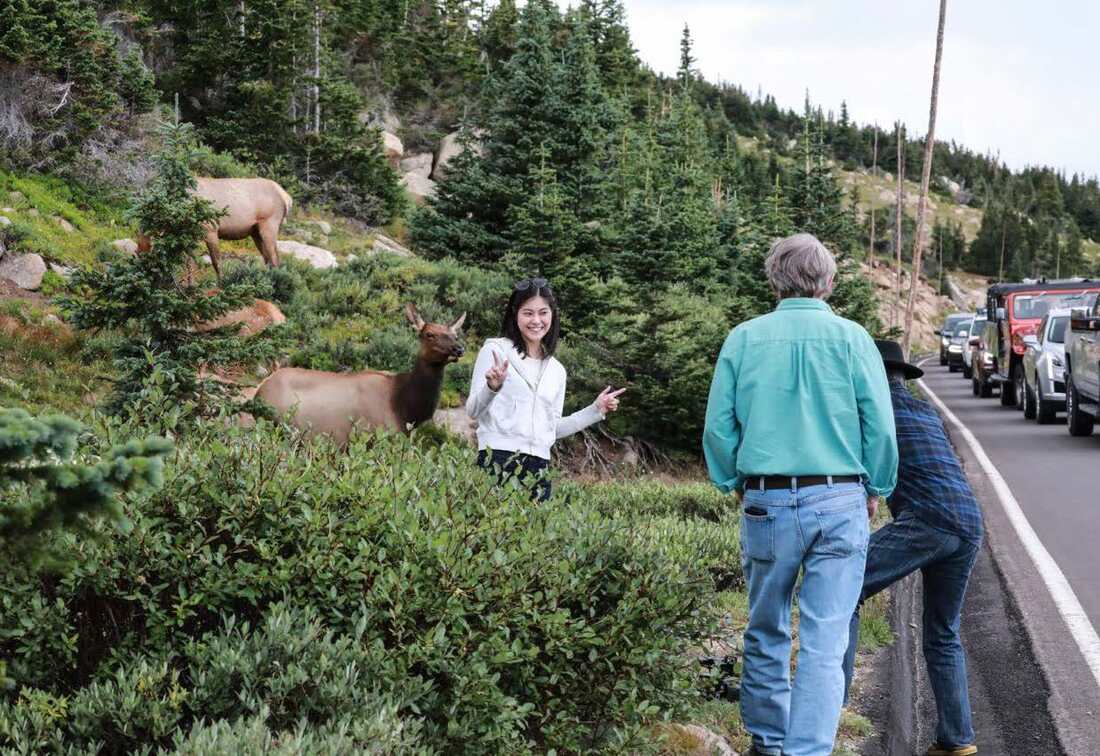|
editor's note: this story is pulled out in its entirety from the February/March edition of HIKE ROCKY digital magazine. For more information about the magazine visit this page by Barb Boyer Buck It's an emergency, calling for emergency measures. The exploding visitation numbers at Rocky Mountain National Park combined with a budget that has stayed flat for a decade has put Rocky's management officials in a defensive position. Something must be done to keep Rocky from being loved to death. “I'd like to say our staffing levels have kept up with the increase in visitation, but it has not,” said Kyle Patterson during a question-and- answer period after a public presentation held on May 25, 2021. This meeting was part of public outreach about long-range visitation strategies in Rocky. “Our base budget that we get from Congress has seen a very flat situation over the past 10 years,” said Rocky's superintendent Darla Sidles at that same meeting. “This flat is essentially an erosion of our budget,” about 14% over that time. Staffing has decreased by 16% as well, while visitation has increased by more than 40% since 2012. Visitation management measures have been in place since 2016 – everything from limiting traffic along the Bear Lake corridor to increased shuttles have been tried to help with the congestion, traffic, inability to find parking, and more. But it wasn't enough; in 2019, the Park's visitation numbers of 4.6 million made it the third most-visited national park in the nation. The following year was a tough one for everyone, but especially for Rocky. The Park was closed for two months between March-May, 2020 due to COVID19, and devastating fires burned more than 30,000 acres (the most in any fire season in the Park's history) from August-October, with dynamic closures of much of the most popular areas of Rocky It was also the first year of timed-entry reservations, a measure that has received a considerable amount of blow-back from the public, especially from those who live near Rocky and along the Front Range. But still, visitation numbers for the year dropped by only 29%, or to 3.3 million visitors. In fact, record-setting visitation occurred in November and December of that year, after most of the Park reopened post-fires and the timed-entry reservation system expired for the season. In 2021, the timed-entry reservation system was modified to address the inadequacies of the previous year's program. Reservations were now required from 5 a.m. to 6 p.m. in the most popular area of Rocky: the Bear Lake Corridor, which includes Bear Lake, Glacier Gorge, Spruce Lake, and Moraine Park and the rest of the Park had reservations-only in place between 9 a.m. – 3 p.m. Even so, visitation for 2021 jumped back up to 4.4 million. The reservation system for 2022 will look a lot like last year's, but it's still considered a pilot program; tweaks were made to address some of the shortfalls of the system that ran in 2021. Reservations will be required from May 27 – October 10, 20, with the first reservations taken on May 2 for May & June dates. “Initially, 25 to 30 percent of permits will be held and available for purchase the day prior at 5 p.m. through recreation.gov. These are expected to sell out quickly and visitors are encouraged to plan ahead when possible,” states Rocky's website. So, those are the nuts and bolts. Not enough funding to improve infrastructure and keep staffing levels where they need to be to properly manage visitation is why we are facing another year of timed-entry reservations. For those of us who live near Rocky and have traditionally been able to pop into the Park when the whim hits us, this can be a hard pill to swallow. The presentation I referred to above fielded questions and collected comments as part of this process; the name- redacted comments are available to read here. They run the gamut from criticizing a lack of privilege for local and Front Range residents to pleas for conserving Rocky's natural wilderness & implementing even more strategies. Some accuse the NPS of a money-making scheme; some say that low-income people will be deterred from visiting. As stated by its Organic Act in 1916, National Park Service's mission is “ to conserve the scenery and the natural and historic objects and the wildlife therein and to provide for the enjoyment of the same in such manner and by such means as will leave them unimpaired for the enjoyment of future generations." Rocky became a National Park in 1915, but perhaps even more significantly, 95% of its land became designated wilderness in 1974, under the Wilderness Act. Designated wilderness by law meant "...in contrast with those areas where man and his own works dominate the landscape, (wilderness) is hereby recognized as an area where the earth and its community of life are untrammeled by man, where man himself is a visitor who does not remain." Why has visitation increased so dramatically at Rocky? The increase in visitation, especially over the past few years, has a direct correlation to several factors. When the pandemic closed off much of the other recreational opportunities available to society, the great outdoors became very popular. This trend pushed those who may have never really visited the outdoors to try it out, which can bring its own problems. Rocky is not at all a “park” like those in urban or suburban areas. Most of it is true wilderness, remote with challenging terrain for even the most experienced outdoorsperson. For example, Rocky has spent an inordinate amount of time pulling vehicles out of ditches this season because the drivers were unfamiliar with driving in winter conditions, or their vehicles were not suitable for the conditions. If the state's traction law is active for Rocky, all vehicles “must have properly rated tires (Mud and Snow, Mountain and Snow or All-Weather Tires) with a minimum of 3/16" tread,” reads Rocky's website on the subject. “If you have improperly rated tires on your vehicle, then you must use an approved traction control device. These may include snow chains, cables, tire/snow socks, or studded tires. When the traction law is in place in RMNP, if a vehicle is involved in a motor vehicle crash, to include sliding off the road due to icy conditions, motorists will be cited if their vehicle does not meet Colorado Traction Control Law requirements.” While overall population growth has stagnated in the US, Colorado's growth has exploded in the past 10 years, gaining nearly 800,000 new residents, leading to another state representative going to Congress. Most of this growth occurred along Colorado's Front Range and Rocky's statistics show that 30-40% of the Park's visitors are from the Front Range. Rocky Mountain National Park's Day Use Strategy Currently, Rocky is working on a long-term day use visitation strategy after its pre-NEPA (National Environmental Policy Act) planning effort and outreach. Additional public comment will be solicited in early 2023 when the formal NEPA process is underway, but the bottom line is that visitor management strategies are here to stay. The pilot programs that have been in place since 2020 will evolve into a permanent strategy based on the results of the NEPA study and other day-use strategies already implemented. Just how restrictive these may be is dependent on funding, staffing, and visitor behavior. The planning process' purpose has many priorities, based on Rocky's mission as a Wilderness Area and a National Park. These include the proper management of the Park's natural and cultural resources, staff and visitor safety, visitor experience, and Rocky's operational capacity. Resource Impacts Social trails, widening of existing trails by visitors, off- trail wandering, and native plant trampling has caused damage to sensitive environments. So has roadside parking, idling, “elk jams” (traffic jams when a wild animal is seen). Vandalism and the illegal collection of artifact damages the cultural sites within Rocky and is “of particular concern to tribal interests.” Human waste has been found in increasing concentrations, affecting water quality and visitor experience. Visitor Experience High traffic congestion at the most popular destinations and roadways has led to frustration among visitors due to the inability to find parking. John Hannon, the Park's visitor use management specialist, reported escalating conflict, including fist fights among visitors and staff, during these times. This congestion has led to the elimination of some popular ranger-led interpretive programs and has impaired emergency response and maintenance of facilities. Even volunteer rangers, desperately needed to help with staffing issues, can't find parking in the places they are needed most. Staff and Visitor Safety Along with physical altercations between frustrated visitors and staff, other safety concerns include visitors illegally starting campfires, approaching, or feeding wildlife, and/or bringing dogs (which are predators to many species) on Rocky's trails. All of these can cause emergency situations that can result in severe injury or death.  Long lines at restrooms prevent staff from properly maintaining these facilities. RMNP photo Long lines at restrooms prevent staff from properly maintaining these facilities. RMNP photo Park Operations and Facilities Higher visitation results in excessive wear and tear on facilities causing the need to triage repairs and focus on the most heavily used areas of the park causing other areas of the park to degrade further. Long lines to get to job sites for facilities, law enforcement, and interpretation staff hampers the park's abilities to provide critical services like maintaining restrooms, responding to emergencies, providing in person program and outreach. Higher water use and wastewater generation than systems can support causes increased frequency and costs of sewage pumping at park-wide vault toilets. Proposed Visitor Use Zones and the desired outcomes of visitor-use strategies In this pre-NEPA process, Rocky Mountain National Park identified three visitor-use zones, each of which are likely to have different visitor-use strategies. Zone One is comprised of 100% wilderness and considered low-use, low-encounter. This area is indicated in green on the map. In this zone is where the natural landscapes are emphasized to their greatest extent. These areas are minimally maintained and provide the best opportunities for solitude and self- reliance. The desired outcome for visitor use strategies in this zone is to keep wilderness conditions pristine, that plant and animal life will thrive with high water quality and minimal human influence and social trails become non-existent. Zone Two provides easy to moderate access to wilderness through Rocky's trail system. These areas are indicated in yellow on the map. and include well- maintained trails closer to restroom facilities, but still provide opportunities to experience the wilderness in relative quiet. The desired outcome in these areas is to keep wilderness recreation plentiful with sustainable trail maintenance and moderately available, well- maintained restroom facilities while retaining the natural integrity of ecosystems, wildlife habitats, and migration behaviors. Indicated in orange on the map is Zone Three, where the most human impact occurs. Envisioned for this zone is that surfaces are hardened or paved to reduce impact on the natural environment and visitors have the most access to information to help them recreate in Rocky and travel with ease to their preferred destinations via private vehicle or alternative transportation. Interpretive and educational programs provide opportunities for visitors to increase understanding and appreciation for park landscapes and resources. The pace of visitation is at a level where park staff can interact with visitors to ensure that visitors are informed, prepared, and use best safety practices. With proper management in this zone, established trails do not exceed design specifications, and visitor- created trails and trail widening are minimal to nonexistent. Visitors experience clean and accessible public facilities, and park staff can access facilities and work areas in a timely manner due to less roadway congestion. Right now, Rocky is still collecting data – the indicators, thresholds, and capacity of the various routes and destinations within its boundaries. In early 2023, the NEPA process will begin, which will give people another opportunity to voice their concerns and make suggestions. Preliminary long-term strategies that are being considered could include a combination of:
“It's not the Rocky Mountain National Park of the 1970s or even the 90s, unfortunately,” Superintendent Sidle said. “We've been trying some different things over the past six years for how to manage this increase in visitation”, and the timed-entry reservation pilot programs have been a stopgap measure to try to spread out visitation throughout the day. Increased visitation is a nationwide problem; visitor-use strategies are being implemented in several national parks across the nation this year including Acadia, Arches, Haleakala, Glacier, Rocky, Shenandoah, and Zion. “Rocky Mountain is a national park,” said Patterson. “And while so many of us are fortunate to live on its doorstep or moved here because of the Park, we cannot provide special access to locals.” 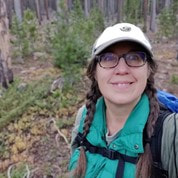 Barb Boyer Buck is the managing editor of HIKE ROCKY magazine. She is a professional journalist, photographer, editor and playwright. In 2014 and 2015, she wrote and directed two original plays about Estes Park and Rocky Mountain National Park, to honor the Park’s 100th anniversary. Barb lives in Estes Park with her cat, Percy.
1 Comment
Kathleen Spring
4/8/2022 05:20:19 pm
Wow! this is a really a great, extensive study. Thanks for doing this, and distributing the article far and wide. I plan to share it on my blog and link to this page.
Reply
Leave a Reply. |
Categories
All
|
© Copyright 2025 Barefoot Publications, All Rights Reserved

